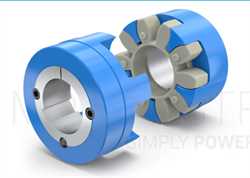Reich Type - S - CV TOK Coupling System
BRAND : Reich
Advantages
-Elements available in different torsional stiffnesses
-Suited for highest speeds
-Adaptation to DIN or SAE flanges or according to speci?cation
...
Details
Advantages
-Elements available in different torsional stiffnesses
-Suited for highest speeds
-Adaptation to DIN or SAE flanges or according to speci?cation
-Self-centering, backlash-free and maintenance-free
-Compensation of axial, radial and angular displacements
-Light-weight construction through the use of high-strength aluminium
-Variable mounting lengths through telescopic intermediate shafts
-For use up to TKN, depending on the application
General Technical Description
Test benches have a wide variety of applications in power transmission engineering. They are used to determine properties of test objects in research, development, manufacturing and quality assurance. The drive train components which are predominantly tested on test benches include, but are not limited to, engines, gearboxes, transmission elements and consumables. Given the multitude of testing tasks, the specific requirements for couplings on test benches are quite diverse. The TOK coupling system can be used in almost all applications. and on test benches in particular. The wide range of flexible coupling elements, adaptations and connection shafts ensures that a standard solution is almost always available in a wide variety of different tasks. These can be complemented by specific customised designs on request.
The flexible element is designed to combine high torque transmission capacity with high speed capability. Its torsional stiffness can be adapted to requirements by selecting different types of rubber.
Bearings or integrated joints support the loads arising from the connection between the drive end and the output end. Cardan shafts, constant velocity (CV) shafts and compact shafts are available as connections which also compensate for displacements. Adaptive designs are based on the standard DIN or SAE ?ange connection dimensions, the CV shaft joints and the torque measuring flanges. The couplings cover a torque range from approx. 100 Nm at 10 000 min-1 up to 70 000 Nm at 1 800 min-1.















